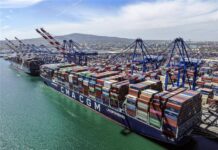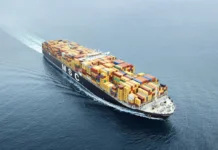
Chittagong Port is grappling with acute congestion at its outer anchorage and container yards due to repeated disruptions caused by Prime Mover and Trailer workers last week. The suspension of container transportation has led to a backlog of vessels and containers, significantly delaying port operations.
As of Monday (10 February) morning, 14 container ships were waiting at the outer anchorage, some for as long as five days. The crisis began on 4 February when government employees allegedly attacked some transport workers near the Bangladeshi port. In response, workers staged intermittent strikes, halting container movements until 7 February, demanding the arrest of those responsible.
Port officials reported that at least six vessels were forced to delay their departure by one or two days and ultimately left without loading nearly 2,000 designated containers. This has exacerbated congestion at private inland container depots (ICDs), which handle all outbound shipments. Since ships could not depart on schedule, incoming vessels have now formed a long queue at the port’s outer anchorage. Officials estimate that it will take at least two weeks to clear the backlog.
Today (10 February), the Chittagong Port Authority reported that around 37,000 TEUs of containers were stockpiled at the port yard. The New Mooring Container Terminal and Chittagong Container Terminal have reached 80% of their capacity due to the disruption.
Syed Mohammad Arif, Chairman of the Bangladesh Shipping Agents’ Association (BSAA), highlighted the severe impact on export-import activities, stating that the strikes forced ships to wait longer and even depart without designated cargo.
The inland container depots (ICDs) are also under pressure, now storing more than double their usual volume of outbound containers. According to Ruhul Amin Sikder, Secretary General of the Bangladesh Inland Container Depots Association, the 19 ICDs typically accommodate 7,000 to 8,000 TEUs of export containers, but this number has surged to over 14,000 TEUs. He warned that it would take at least a week for depot operations to return to normal.
The port and logistics sector now faces the challenge of clearing the congestion and restoring smooth operations, as businesses brace for further delays and disruptions.
Sharar Nayel
Asia Correspondent





